Turn Taking
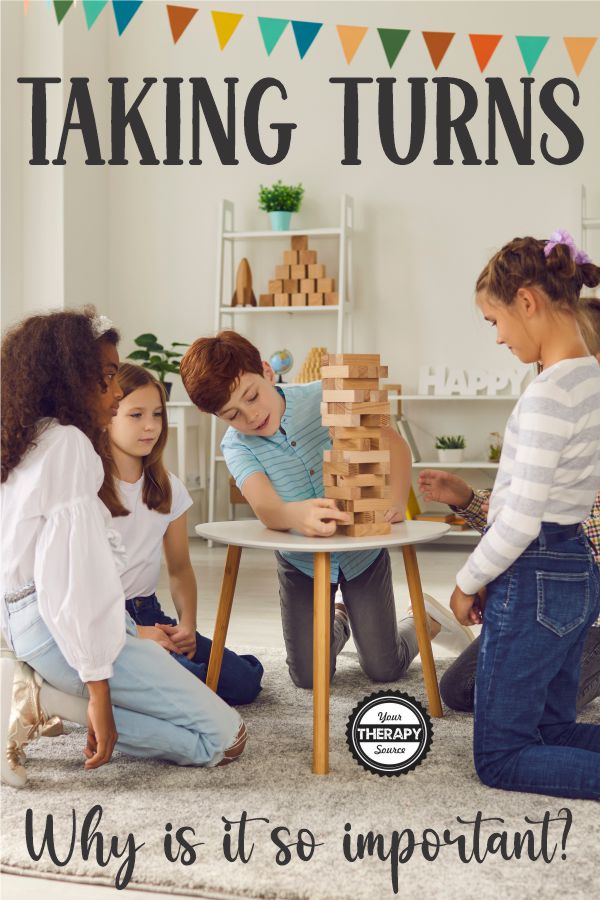
Learning turn taking is an essential skill for children as it helps them to develop social competence, self-regulation, and communication skills. Turn taking allows children to understand the importance of sharing, waiting patiently, listening actively, communicating effectively, and respecting others’ opinions.
Mastering turn-taking can enhance a child’s cognitive development as they learn how to plan, strategize, and problem-solve in social situations. Overall, learning turn taking is crucial for a child’s social and emotional growth and can benefit them throughout their lives. Read on to learn more about turn taking and how you can support this important communication skill.
WHAT IS THE MEANING OF TURN-TAKING?
Turn-taking is a back-and-forth exchange, either verbal or non-verbal. It is an important foundational skill for all types of social interactions.
A very basic form of turn-taking, a milestone in typical language and social development across languages and cultures, starts in infants before they can even talk; babies will babble while looking at caregivers, who will then communicate back to them, either verbally or non-verbally. This is an early form of conversation, and is the basis for all kinds of other reciprocal interactions they will have in the future. For toddlers and younger children, more sophisticated forms of turn-taking need to be taught, but will stem from this foundational turn-taking they have learned as babies.
Turn-taking is critical for language and social skills development. If a child has had difficulty developing turn-taking skills (this can happen for a variety of reasons, including Autism Spectrum Disorder (ASD), Attention Deficit Hyperactivity Disorder (ADHD), etc.), addressing it in speech-language therapy can help.
TURN TAKING EXAMPLES
Turn-taking skills involve waiting to take a turn and also recognizing when it is your turn.
Some examples of turn taking include:
- asking for a toy and waiting for an affirmative response before taking it
- following the sequence of turn-taking games
- waiting to be called on before responding to teacher questions in the classroom
- giving other kids a chance to play with preferred toys during playtime, pretend play, or centers
- knowing when it is your turn to sing a part of a call and response song
- washing your hands when it is your turn at lunch time
- waiting in line for your turn to play foursquare at recess, and then moving around the squares when it’s time to do so
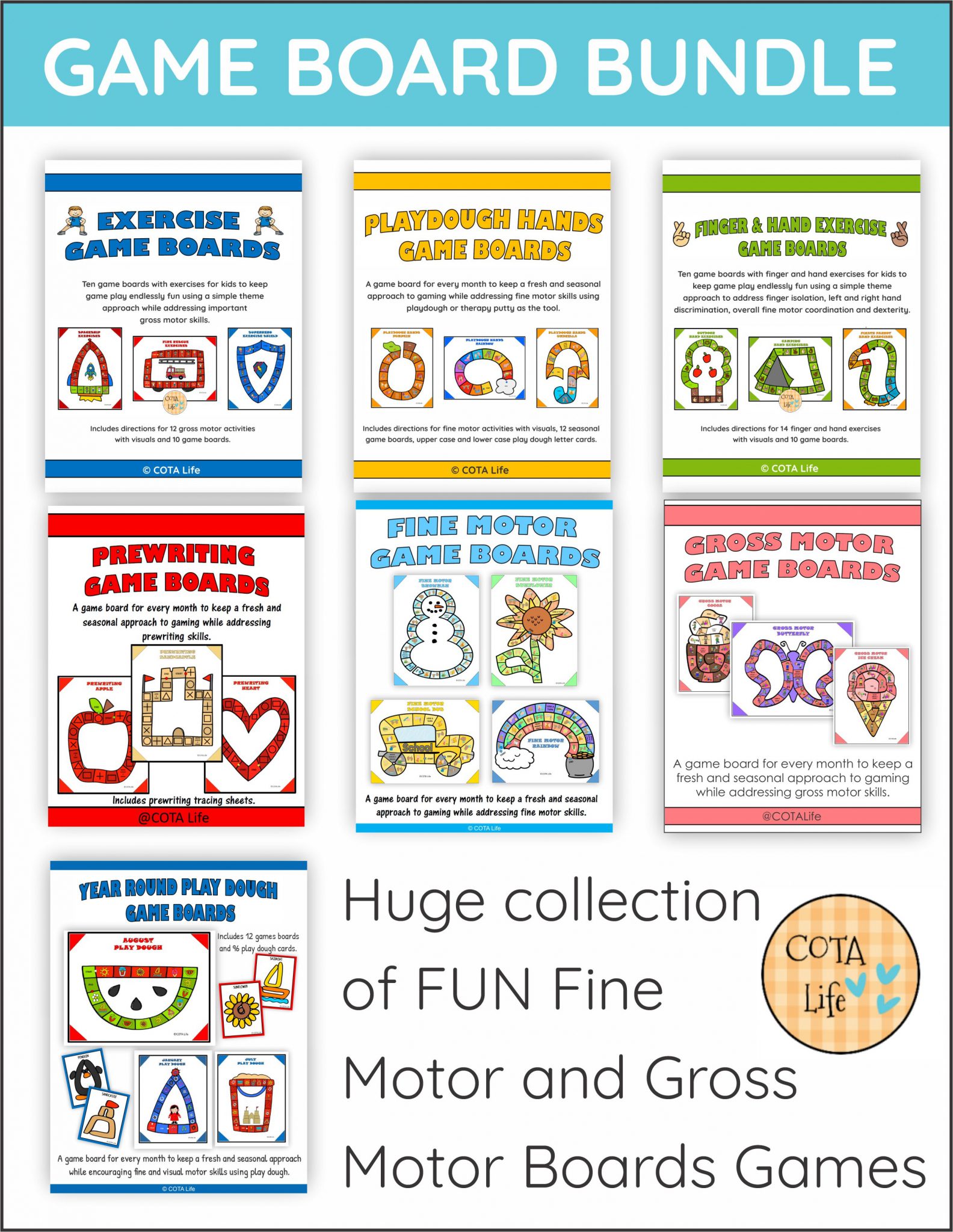
Game Board Bundle
TURN TAKING IN CONVERSATION
Turn-taking is an inherent part of conversation. Without it, there would be interruption, overlaps, and a reduction in the meaningful exchange of information.
Participating in a conversation requires children to draw on a variety of turn-taking, language, and social communication skills, including:
- initiating a conversation
- considering topics of interest (for all members of the conversation)
- attending to the person, or people, they’re speaking with
- speaking when it is their turn
- listening when it is their turn
- clarifying misunderstandings
- asking meaningful questions
- adding relevant information about personal knowledge or experiences
- changing topics appropriately
- and considering the thoughts and feelings of the person, or people, they are speaking with.
TURN TAKING GAMES
Our expectations for students’ independence in taking turns while playing turn-taking games will be different for preschoolers versus older students, of course.
Here are some examples of games that can be used for teaching and practicing turn-taking and cooperation:
- several students forming a line and completing an obstacle course one-by-one
- stacking blocks with a friend
- bowling and changing who bowls or stacks the pins up when a timer goes off
- playing foursquare on the playground
- jumping rope where everyone has a turn to both jump and turn the rope
- having a turn in each role within a pretend play schema such as a store or veterinary office
- participating in call and response songs
- playing guessing games like I Spy
- playing barrier games
- creating a story where each member of the group adds on a sentence when it is their turn
- playing conversation Lego where you stack a Lego piece for each conversational turn (you can even color-code the pieces for questions, comments, etc.)
- playing card games and board games
- playing catch or kicking a ball back and forth with one or more peers
- following a recipe to make a snack where each person does an assigned task at the correct time
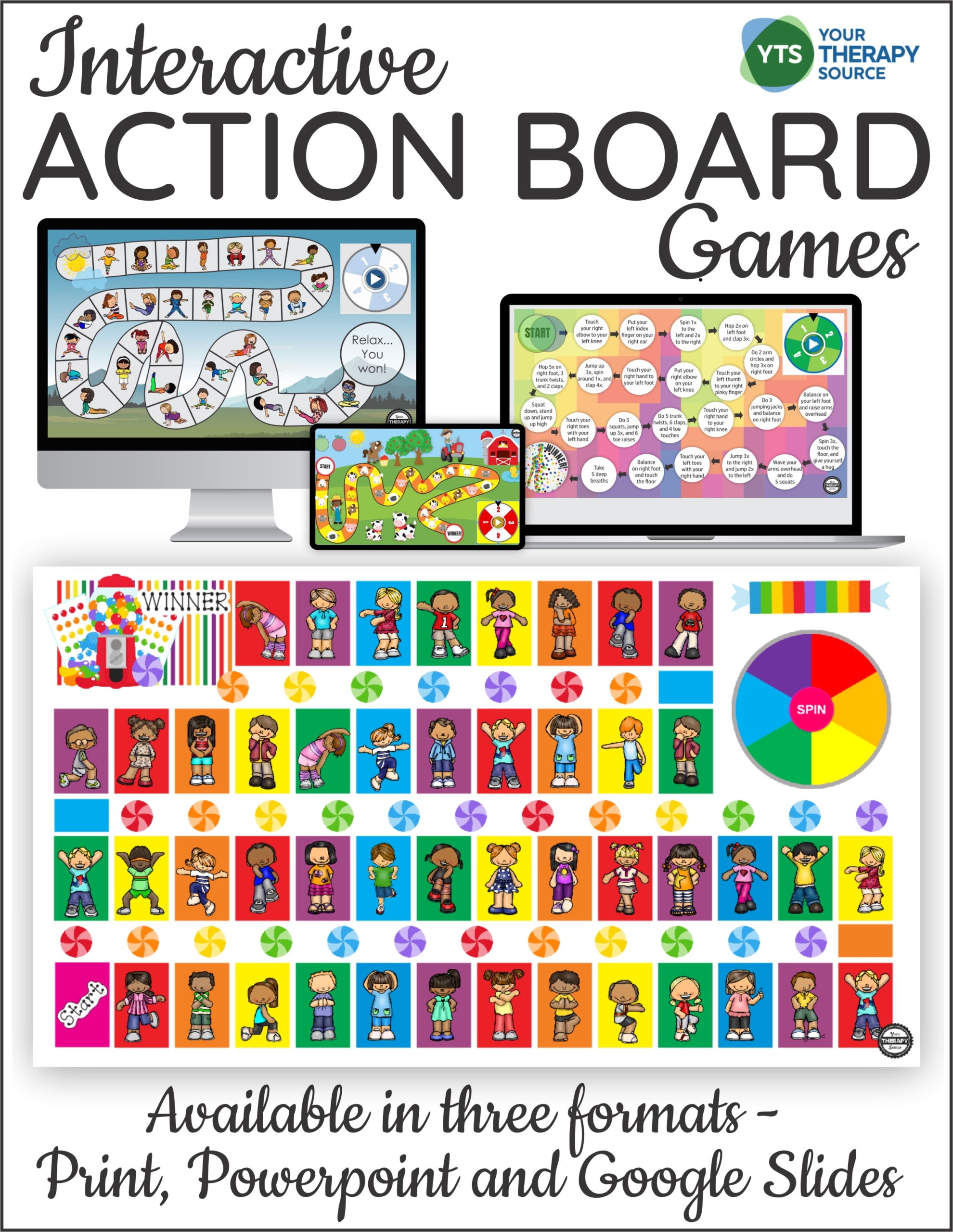
Action Board Games – Interactive with Powerpoint, Google Slides and Print
WHY IS TURN TAKING IMPORTANT IN SPEECH AND LANGUAGE DEVELOPMENT?
According to Hanen, participating in conversation can also help children to hear a variety of words, learn to pay attention to someone else, learn how to send a message effectively, practice using words and gestures, learn to ask questions, and gain confidence as a speaker.
A study by Romeo et. al in 2018 found that back-and-forth exchanges (conversational turns) boost children’s brain response to language. Reciprocal interactions with caregivers were found to cause children to have more activity in the part of the brain that is in charge of language production and processing, which improved their language skills overall. They also found a connection between participation in an increased amount of conversational turns and higher scores on language tests.
TURN TAKING GOALS SPEECH THERAPY
Here are some examples of SMART goals for turn-taking. Read more information about creating SMART goals for problem solving.
“By the end of the school year, (child’s name) will take at least 5 turns in an oral story creation activity in the therapy room with one to two other peers by adding one sentence per turn that is logically related to what has been stated so far, with visual cues, in 4 out of 5 trials over 5 consecutive sessions, as measured by the speech therapist.”
“In one year, (child’s name) will sing the response part of call and response songs in the classroom during circle time with faded models in 3 out of 4 observed opportunities, over three consecutive school days, as measured by the speech therapist and/or classroom teacher.”
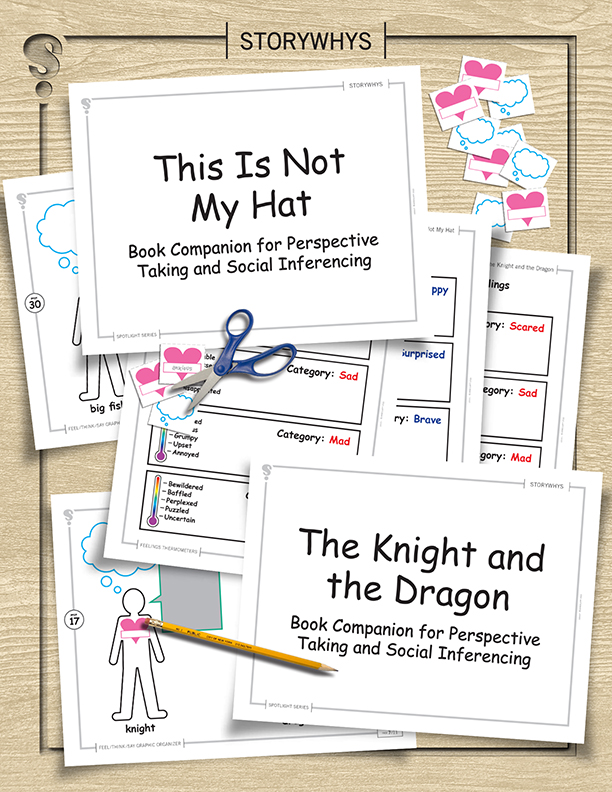
Emotions and Perspective Taking Book Companions
CONVERSATIONAL TURN TAKING GOALS SPEECH THERAPY
Here are some examples of SMART goals for conversational turn-taking.
“In one year, (child’s name) will ask contingent questions while talking with one other conversational partner in the speech therapy room (based on what he knows about this peer and/or what they just said), in 4 out of 5 opportunities with verbal and visual cues over 5 consecutive sessions, as measured by the speech-language pathologist.”
“By the end of the school year, (child’s name) will make a transition to a new topic while in conversation with one other peer in the speech therapy room by relating the old topic to the new topic in 5 out of 5 trials, with visual supports, as measured by the speech therapist.”
Reference:
Romeo, R.R., Leonard, J.A., Robinson, S.T., West, M.R., Mackey, A.P., Rowe, M.L. & Gabrieli, J.D.E. (2018). Beyond the 30-Million-Word Gap: Children’s Conversational Exposure Is Associated With Language-Related Brain Function. Psychological Science.
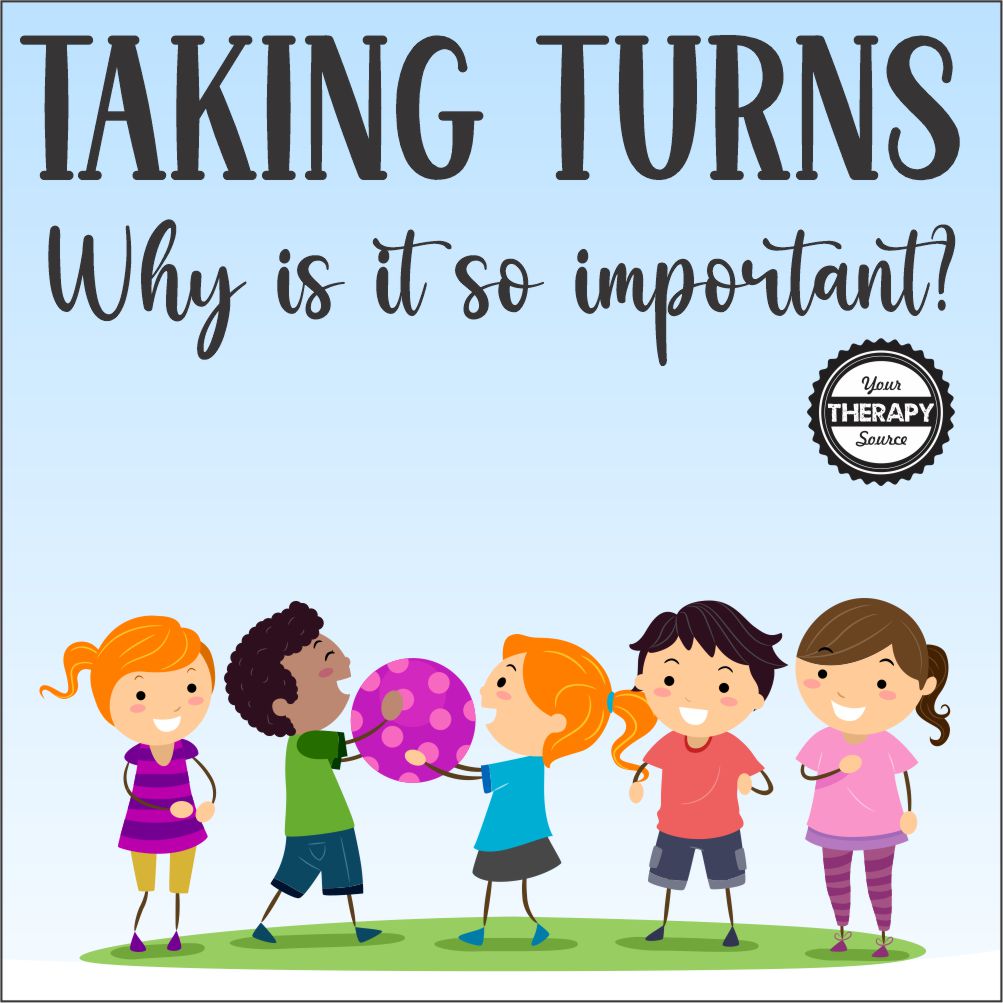
AUTHOR BIO
This Turn Taking article was written by Jane Clapp, MA, CCC-SLP. She has worked as a pediatric speech-language pathologist in New York City schools for over 20 years. She is the creator of StoryWhys book companions, which help SLPs provide high-quality, literature-based language therapy with elementary aged students. You can find resources, ideas, and information for busy SLPs on her blog, StoryWhys.com


